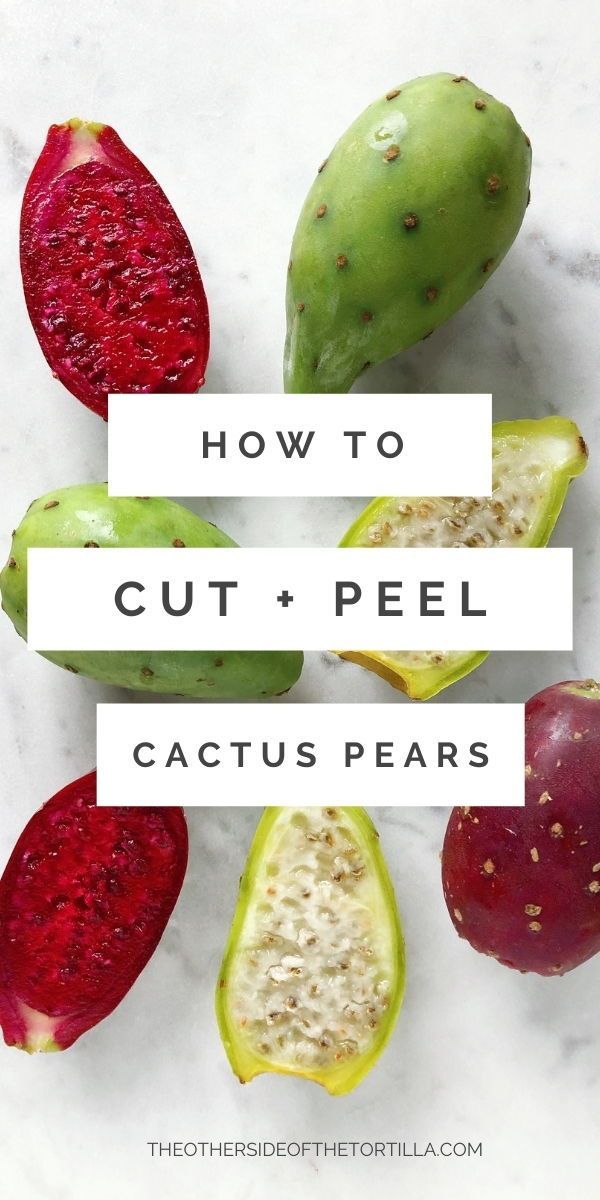Cactus pear, also known as prickly pear or “tuna,” offers a vibrant splash of color and flavor to any culinary repertoire. Native to the Americas, this exotic fruit entices the taste buds with its sweet, juicy flesh and inviting texture. However, many are left wondering how to properly savor this delectable gift from nature. This guide will unravel the methods of consumption, demystifying the process and encouraging an adventurous culinary spirit.
From the unique appearance of cactus pears to their myriad uses in gastronomy, getting to know this fruit opens a world of delectable possibilities.
Understanding Cactus Pear: A Visual and Flavorful Delight
Before diving into consumption, it’s important to recognize the cactus pear’s striking features—its vibrant hues range from rich magenta to sunny yellow, adorned with tiny, hair-like spines that merit caution. The fruit measures around three to six inches in length, encapsulating a succulent pulp that is typically sweet, with a flavor that imitates a blend of watermelons and strawberries. The seeds inside the pear, often crunchy and edible, add to the eating experience, offering both texture and contrast.
The allure of cactus pears extends beyond their unique taste; they are a treasure trove of nutrients. Bursting with vitamins C and A, along with minerals like magnesium and potassium, these fruits not only satisfy cravings but also contribute to overall health.
The Journey Begins: Selecting and Preparing Cactus Pears
The first step to enjoying cactus pear is selecting the right fruit. Look for specimens that are firm and brightly colored, avoiding any that show signs of over-ripeness or blemishes. A well-ripened cactus pear should have a pleasant scent and give slightly when pressed, indicating juiciness.
Once you have the perfect cactus pears, preparation becomes an engaging task. Begin by donning gloves to protect your hands from the tiny spines known as glochids. Wash the fruit thoroughly under running water, ensuring that any debris is removed.
Next, carefully slice off of both ends of the cactus pear. This makes it easier to handle the fruit without spines causing discomfort. With a sharp knife, cut along the length of the pear, piercing through the skin without cutting too deeply into the flesh. Then, gently peel the skin away, revealing the luscious pulp underneath.
An elegantly prepared cactus pear will present itself ready for consumption, emitting a sweet aroma that is difficult to resist.
Devouring the Delicacy: Fresh, Flavorful Ways to Enjoy Cactus Pear
Now, the moment to indulge has arrived. One of the simplest and most enjoyable ways to eat cactus pear is to consume it raw. Cut the peeled fruit into wedges or cubes, allowing the juicy flesh to shine. Fresh cactus pear can be enjoyed solo, or adorned with a sprinkle of lime juice and a hint of chili powder for an invigorating twist.
For a more substantial culinary experience, consider incorporating cactus pears into salads. Their vibrant color and sweetness play beautifully against the crunch of fresh greens or the creamy texture of avocado. Tossed with cilantro, red onion, and a light dressing, cactus pear salad transforms the ordinary into the extraordinary.
Cactus pears can also shine in beverages. Blend the flesh into smoothies, or create a refreshing cactus pear juice by pureeing the fruit and straining out the seeds. The sweet tang of cactus pear juice can invigorate any summer gathering or serve as a vibrant breakfast option.
Further Exploration: Creative Culinary Uses of Cactus Pear
The versatility of cactus pear transcends the realm of fresh consumption. One intriguing avenue is crafting cactus pear preserves or jams. The sweetness of the pulp marries beautifully with sugars and pectin, resulting in a delightful spread that can elevate toast or pastries to new heights. When cooked down, the vibrant color of the cactus pear transforms into a stunning jewel-toned topping.
Additionally, cactus pear can pique the interest of adventurous palates in savory dishes. Consider creating a cactus pear salsa, combining diced fruit with tomatoes, onions, jalapeños, and lime juice for a dynamic condiment that layers flavors. This fresh salsa serves splendidly with grilled meats or as a vibrant addition to tacos. The intrigue lies in the juxtaposition of the sweetness of the pear against the sharpness of the other ingredients, awakening the senses with each bite.
Sweet and Sour Alchemy: Attempting Cactus Pear Desserts
When it comes to desserts, cactus pear proves to be a splendid ally. Infuse its essence into sorbets or ice creams, capturing the fruity richness and pairing it with complementary flavors, such as coconut or citrus. The coolness of frozen desserts in warm weather perfectly highlights the cactus pear’s refreshing profile.
For a more adventurous dessert, consider cactus pear tartlets, where the juicy pulp is enveloped within a buttery crust, crowned with a drizzle of honey or chocolate. This indulgent creation promises an unforgettable ending to any meal.
In conclusion, consuming cactus pear unlocks a world of culinary possibilities, promising not just nourishment, but an exciting journey through diverse flavor profiles and textures. As you explore the multifaceted ways to enjoy this exotic fruit, allow your imagination to blossom and indulge in the vibrant transformation cactus pear brings to your table. So venture forth, embrace the ordinary turned extraordinary, and savor every succulent bite of this delightful fruit!





Leave a Comment